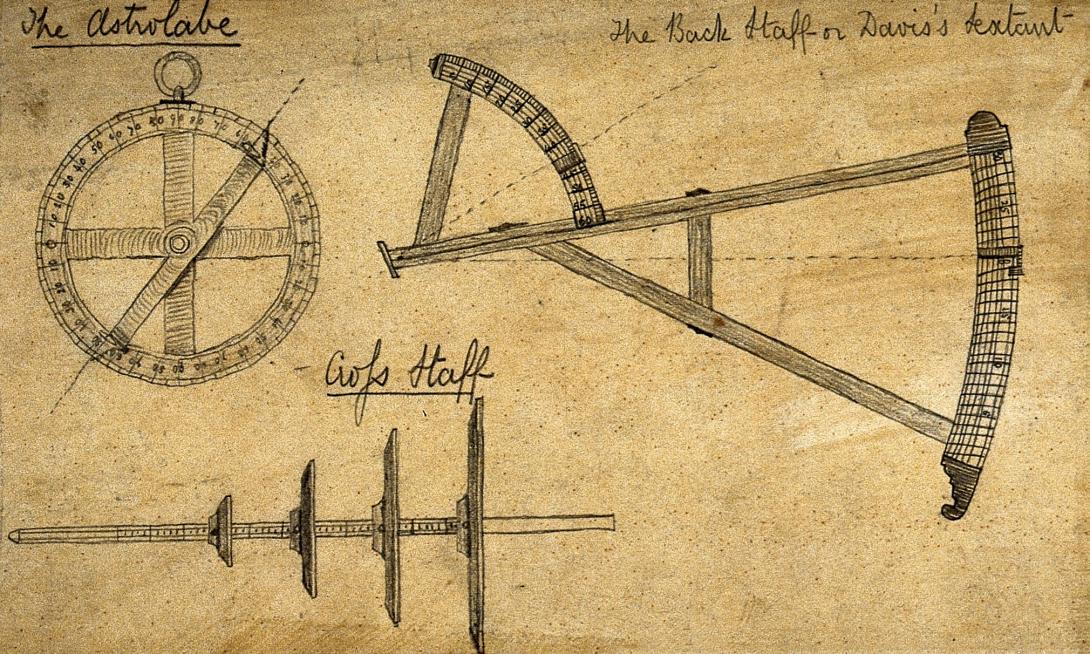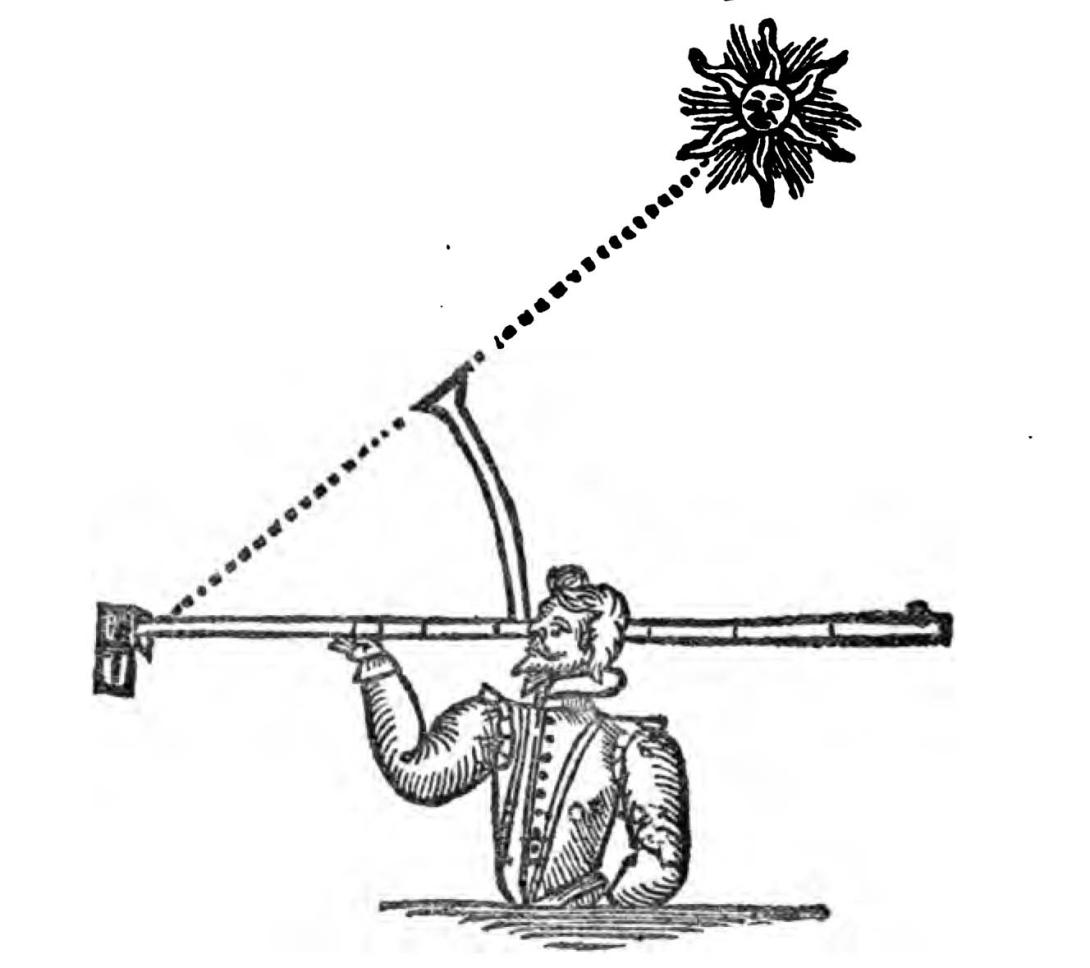
The Backstaff
Easy on your eyes
Having a look at the various navigational instruments displayed here, you can see the progression of refinement in them over the centuries. The problem with the earliest ones except for the Arab Kamal which used star sights, is that the navigator had to look directly at the sun when calculating its height above the horizon. This could lead to 'sunburn' of the eye and in some cases cause permanent damage. However, for every problem there is an answer and before you is a replica of a backstaff, an instrument that did not require users to blind themselves.
The backstaff was invented by English navigator John Davis, who described it in his book, Seaman's Secrets, as long ago as 1594, when Elizabeth I was monarch. When calculating their latitude, users kept the sun behind them, hence the name, and observed the shadow cast by the upper vane on a horizon vane. Another advantage of the backstaff was that the user could brace themselves against a strongpoint on their vessel when taking observations, rather than attempting to steady themselves while holding up the swinging disk of an astrolabe.
While the backstaff was a great advance over earlier instruments, there is also evidence that new ideas take a while to catch on. Astrolabes were found in the wrecks of both Batavia, 1629, and Vergulde Draak, from 1656.
The sextant, first used in the early 1700s, overcame the danger of blindness by using filters to allow safe observation of the sun.
Sextants remain a practical backup tool for ships because they don't require electricity or human-controlled signals such as GPS satellites.

Drawing of an astrolabe, a cross-staff, and a back-staff or Davis's sextant by Edmund Gunter from 1624.
Credit: Wellcome Images

Demonstration of the use of a backstaff. From John Davis' "The Seaman's Secret", 1607.
Credit: Public domain.

Cabinet with Cross Staff & Information about Back Staff
Credit: WA Museum